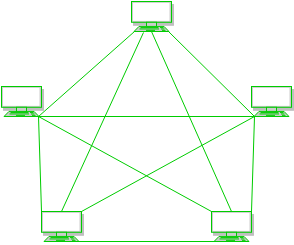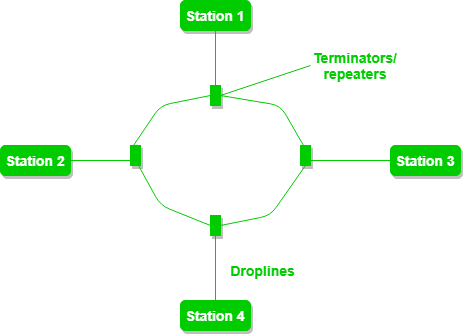Network topology
Network topology is the arrangement of the elements (links, nodes, etc.) of a communication network. Network topology can be used to define or describe the arrangement of various types of telecommunication networks, including command and control radio networks, industrial field busses and computer networks.
Types of Network Topology
The arrangement of a network that comprises nodes and connecting lines via the sender and receiver is referred to as network topology. The various network topologies are :
a) Mesh Topology :
In a mesh topology, every device is connected to another device via a particular channel.

b) Star Topology :
In star topology, all the devices are connected to a single hub through a cable. This hub is the central node and all other nodes are connected to the central node. The hub can be passive in nature i.e., not intelligent hubs such as broadcasting devices, at the same time the hub can be intelligent known as active hubs. Active hubs have repeaters in them.

c) Bus Topology :
Bus topology is a network type in which every computer and network device is connected to a single cable. It transmits the data from one end to another in a single direction. No bi-directional feature is in bus topology.

d) Ring Topology :
In this topology, it forms a ring connecting a device with its exactly two neighboring devices.

e) Hybrid Topology :
This topology is a collection of two or more topologies that are described above. This is a scalable topology that can be expanded easily. It is a reliable one but at the same, it is a costly topology.

No comments:
Post a Comment